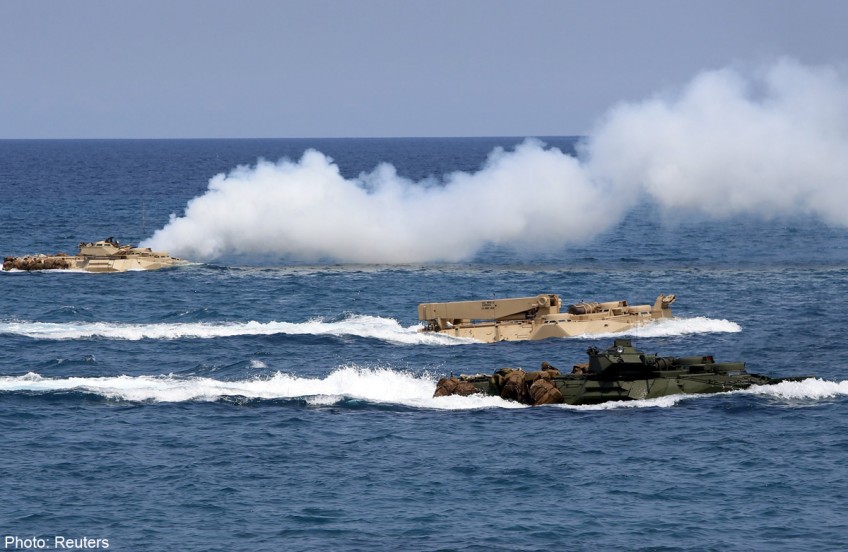US planes keep distance from Chinese 'islands' - for now

WASHINGTON - US surveillance aircraft and naval ships have yet to test China's territorial claims around artificial islands built in the South China Sea, but the Pentagon warned Thursday that could be "the next step."
Although the United States does not recognise China's claims of sovereignty around the man-made structures, American P-8 surveillance planes and naval vessels patrolling the area have not ventured within 12 nautical miles of the artificial islands -- the standard territorial zone around natural land.
"That would be the next step," Pentagon spokesman Colonel Steven Warren told reporters.
Asked if the military would move to within that sensitive zone, he said: "We don't have any announcement to make on next steps. We are going to continue our routine flights."
US officials have said they are weighing sending warships and surveillance aircraft within 12 nautical miles of the man-made islands in the South China Sea to test Beijing's controversial territorial claims.
But the move could raise tensions and lead to a standoff on the high seas -- in an area vital to global shipping lanes.
Beijing regards almost the whole of the South China Sea as its own.
The comments came after an American television crew aboard a P-8 Poseidon plane captured a tense radio exchange between the US aircraft and Chinese forces in the South China Sea.
"This is the Chinese navy... This is the Chinese navy... Please go away... to avoid misunderstanding," a voice can be heard telling the Americans, according to a video of the exchange released by the US Navy.
The Chinese navy issued eight such warnings during the P-8's flight near the Fiery Cross Reef, one of the sites of Beijing's massive land reclamation effort, CNN reported.
American pilots replied in each case that they were flying through "international airspace."
Journalists are rarely allowed to fly in a sophisticated P-8 spy plane, much less permitted to film inside the cockpit, as the CNN crew was.
The extraordinary access, along with a rare video released by the US Navy from the P-8's flight, underscored Washington's determination to focus global attention on China's large-scale dredging work in the South China Sea.
The Chinese warnings to the US aircraft are typical and occur frequently, a navy official told AFP.
"It's not uncommon," the official said.
And sometimes the Chinese send military aircraft to visually identify American planes in the area, the official added.
Earlier, China said it had "indisputable sovereignty over the Nansha islands and adjacent waters", using its name for the Spratlys.
"We hope that relevant countries can respect China's sovereignty in the South China Sea, avoid taking actions that may escalate or complicate the matters, and contribute to regional peace and stability," Beijing's foreign ministry spokesman Hong Lei told reporters.
With Beijing pursuing land reclamation at an unprecedented pace, a US naval commander has accused China of building a "great wall of sand" in the South China Sea to bolster its territorial claims.